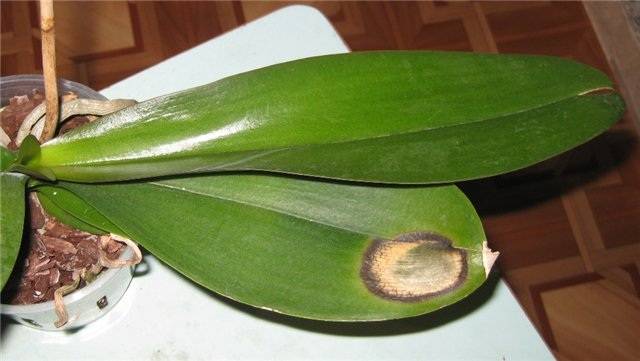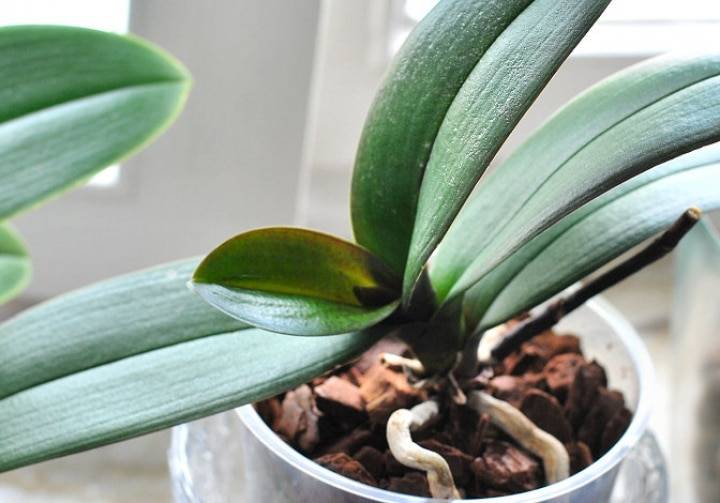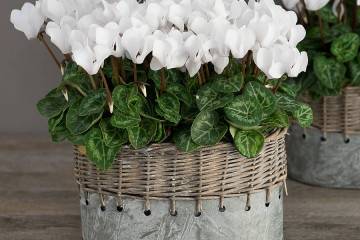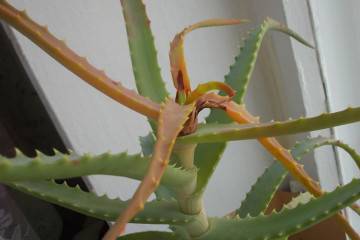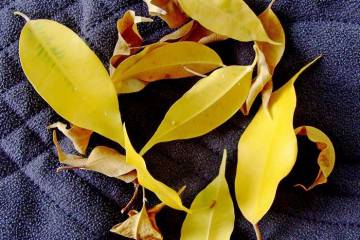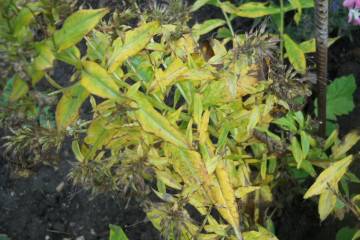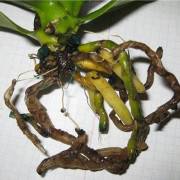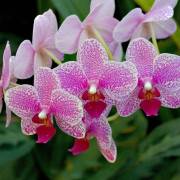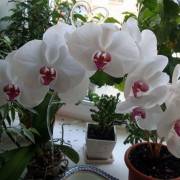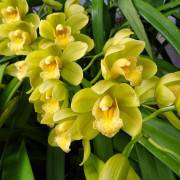Why do orchid leaves turn yellow - how to save
Content:
A novice florist and a professional may face the same problem - the leaves of the orchid begin to turn yellow. This is due to the fact that it is almost impossible to create ideal conditions for growing a flower. However, not everyone wants to lose their favorite houseplant, and therefore you need to know what to do if the orchid leaves turn yellow.
When to worry
There are always many reasons for concern if the leaves of an orchid begin to turn yellow and fall off. However, if this only happens to the lower two, and the upper ones are still deep green and have not begun to fade, do not worry, as this is a normal process of withering away old foliage.
From time to time, the orchid should perform this procedure. Depending on the type of flower, this will be repeated every 1-2 years or 5 years. Soon, new leaves should grow, which will provide the plant with a normal metabolism. In other cases, it is worth starting to find out the reason why the leaves of the orchid turn yellow.
Causes of yellowing of leaves
Before fighting the yellowing of orchid foliage, you need to find out the reasons why they change color and begin to fall off. Perhaps the problem is completely improper care, or maybe pests or infections have appeared that prevent the flower from developing.
Natural non-hazardous causes
The yellowing of orchid leaves can occur naturally due to old age. They begin to brighten and fall off, but young leaves of a light green hue appear in their place. Depending on the type of flower, this can happen once a year or after each flowering.
Improper watering
Proper care of the plant will help maintain its health, but not every grower knows how to act correctly. The orchid will give a sign if something is wrong: it will start to dry or disappear.
Excessive hydration
Leaf problems most often start at the roots of the plant. If the substrate does not have time to dry out before the next watering, then this will affect the health of the orchid. In this case, the leaves become less elastic, begin to turn yellow, become stained and fall off.
In this case, a transplant into a new pot is necessary. During transshipment, it is required to remove damaged roots.
Lack of moisture
If the substrate does not look excessively wet, but the plant continues to wilt, it is recommended to start watering it more often, or change the watering scheme itself. If previously watering was carried out through immersion in water, then it is worth replacing it with a regular one - watering from above.
Diseases and pests
If there is no doubt that the plant is being cared for correctly, you need to start looking for signs of infection or pests. They can have a detrimental effect on the plant, as well as other causes.
Diseases
Leaves can turn yellow due to diseases. The most likely route of infection is from another plant. If yellow circles and spots appear on the leaves, this means that a fungal infection is present. Most often, it also manifests itself as tubercles.
If this is the initial stage of infection, you can simply treat the plant with a fungicide. In advanced cases, it is worth cutting off part or all of the sheet, processing the cut point.
Pests
Most often, the red spider mite annoys. Its presence can be indicated by a cobweb on the underside of the leaf, the individuals themselves can also be shown to the eyes. First of all, it is worth rinsing the flower with water heated to 40 ° C. If this does not help, then it is worth using fungicides (for example, thiophos and neoron).
The underside of the leaf is a favorite place for aphids. She feeds on plant sap, which is why they begin to fade and wither. Fungi can accumulate on the waste products of this pest, and therefore it is required to try to get rid of aphids in a short time. To do this, wipe the leaves with soapy water (40 g of liquid laundry soap per 10 liters of water). If this does not help, it is required to process the indoor flower with phytoverm.
If dark growths began to appear on the leaves, it means that the plant was attacked by a scale insect. Young individuals can only be seen with magnifying instruments. You can get rid of pests with phytoverm or actellik. Repeat the processing procedure is required in a week.
Incorrect fertilization
The orchid is considered a fairly unpretentious plant, but it has certain requirements for the soil in which it grows. It is recommended to purchase the substrate from specialized stores. However, from time to time you will have to make additional feeding.
Fertilizer abuse
Most often, this is the fault of sellers in flower shops. This allows you to preserve the blooming appearance of the orchid for a longer period. The plant can grow quietly for several years, or it can begin to wither after 2 weeks, it all depends on the dosage used.
You can save an orchid at home, but it will take a long time. First of all, it is worth stopping feeding the plant, and also not letting it bloom, since it will spend a lot of energy on this, which may cause it to die.
If only the tips of the leaves have become yellow, then the treatment consists in transplanting into a new soil. This phenomenon indicates that the substrate contains a large amount of calcium. For a while, it is required to refuse to make additional fertilizing.
Lack of fertilizer
A small amount of nutrients in the soil can also negatively affect the plant. The orchid reacts especially sharply to a lack of potassium in the substrate. In this case, yellowed upper leaves may fall off, on which yellow streaks have appeared. It is required to treat the flower by introducing fertilizer into the soil with the necessary component - potassium.
Orchid sunburn
The appearance of brown spots on the leaves may indicate sunburn. In this case, it is recommended to choose a more shaded area of the window sill or to scatter direct sunlight. It is also necessary to cut off the affected parts of the leaves.
Flower lighting problems
If not only the leaves begin to brighten, but also the aerial roots, this may indicate a lack of sunlight. It is necessary either to rearrange the flower in a sunnier place, or use special lamps. Without a lot of sunlight, some plant varieties may die altogether.
Transplant errors
The most common mistakes made when transplanting a plant:
- pot and tools were not processed;
- the soil was not used for planting orchids;
- dead roots have not been removed;
- the plant was watered with cut roots.
It is recommended to transplant into a transparent plastic pot in order to monitor the condition of the root system during the process of growing the orchid.
What to do to save the plant
To save the plant, you first need to find out the reason why the leaves turned yellow and fell off. In each case, it is necessary to take certain measures. If the orchid is attacked by pests or has been infected, it is worth treating with fungicides.
In any other case, it is recommended to simply read the rules for caring for the plant so as not to make mistakes in the future. Keep in mind the following:
- the flower should be in a well-lit place where direct sunlight will not fall on it;
- watering must be carried out with settled water. In winter, it is required less often than in the warm season;
- the method of watering should be alternated: first from above into the pan, next time hold the pot in a bowl of water for a while;
- the pot should be selected according to the size of the root system so that the flower is not cramped;
- a transparent pot will allow you to see if watering is needed or if the substrate should be allowed to dry;
- it is required to buy a special substrate for growing orchids, as well as to introduce specialized feeding on time.
There will be no reason for concern if you take care of the plant correctly. It must be borne in mind that the orchid usually grows in the tropics, and therefore it should be sprayed from time to time from a spray bottle.
Why the lower leaves of an orchid turn yellow is known by almost every florist who has taken up the cultivation of this flower. However, he is not always able to determine if the flower needs help, since he thinks that this is a standard process of changing leaves. You should pay attention to the condition of the plant so that it does not die.




